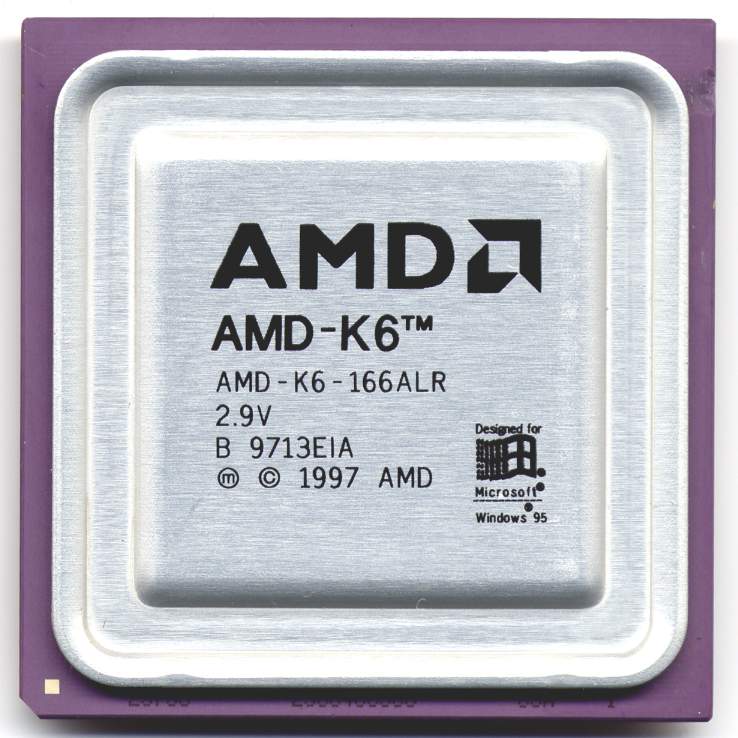Don't be so hung up on clock speeds because they're VERY deceptive. Having a CPU that can clock at 5GHz doesn't mean anything by itself. Hell, the FX-8350 can EASILY clock to 5GHz and beyond but it doesn't mean anything because the IPC is so damn low. Worry about total performance which is clock speed x IPC.
Higher clock speeds are seemingly harder to do with smaller production nodes because the smaller the transistor gates become, the less resistant they are to the thermals caused by higher voltages. This is one of the reasons why it was easier to have higher clock speeds in the past than it seems to be now. When you increase your multiplier, you usually have to also increase your voltage to keep the CPU stable. With production nodes getting so small, the voltages have to be kept down or your fry the CPU.
I'll use the old AMD K6 CPU as an example because it has the core voltage printed on the heat spreader.
The original K6 was manufactured using a 350nm process node. It had a core voltage of 2.9V at 166MHz:
However, once it advanced to 250nm and the clock speed increased by ~30% on average, the core voltage had to be lowered to 2.2V: This means that the first version would probably have been a better overclocker and would be able to reach a higher overclock than the newer one as long as sufficient cooling was given because the transistor gates are just that much larger and sturdier. Unfortunately, overclocking was not a really a thing yet.
Silicon is a semiconductor and therefore has a good amount of resistance to the transmission of electricity. That resistance creates a lot of heat and so the core voltage had to be dropped considerably because the smaller transistor gates were unable to tolerate the thermals generated by resisting 2.9V at 300MHz.
So you see, worrying about some clock speed that is only useful for comparing two CPUs of EXACTLY the same architecture and node is a complete waste of time. The only thing that matters is what the numbers say in Steve's graphs and tables.


